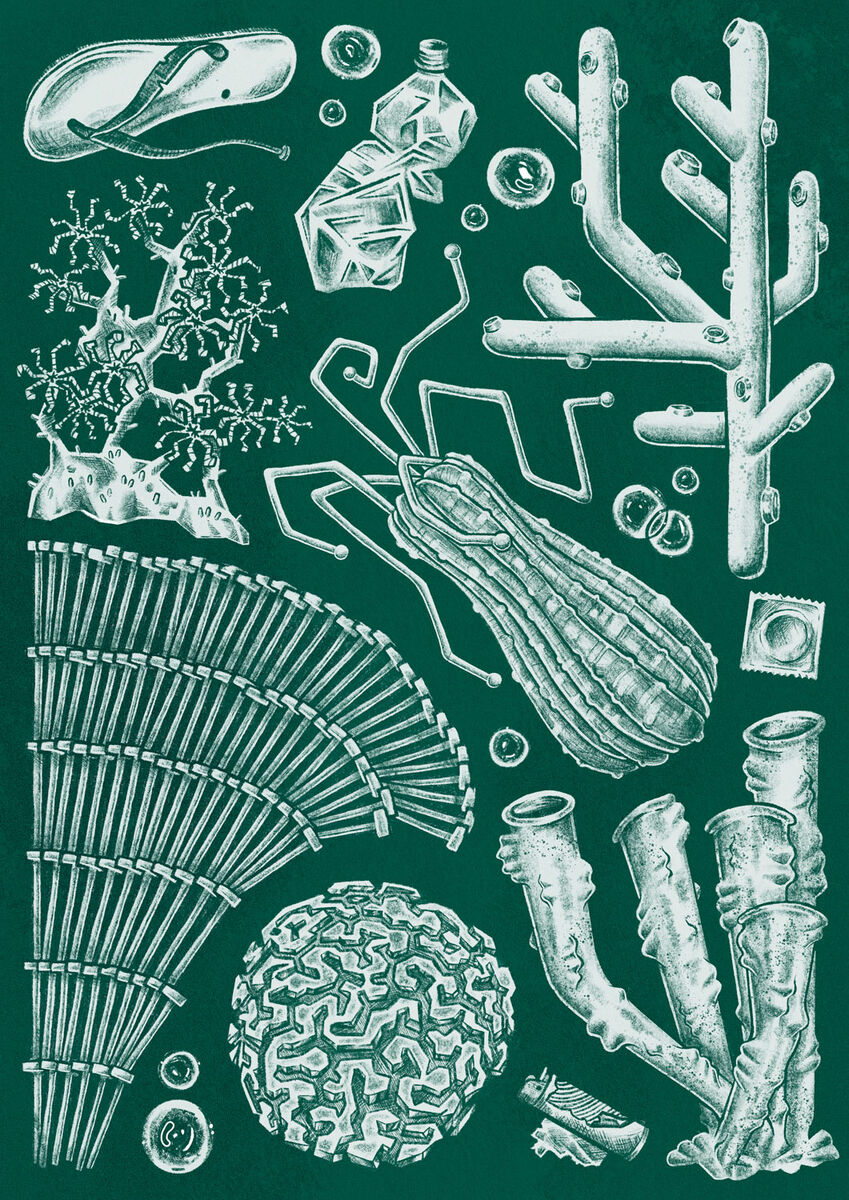Plasticene
Many everyday materials and products like plastics and fuel are made of petroleum or petrochemicals that originated in large part from prehistoric oceans. Millions of years ago, decaying biomass sank to the seabed together with clay particles, where it formed digested sludge or sapropel. Further subsidence into deeper layers of the Earth’s crust, under high pressure and elevated temperatures, resulted in the formation of oil source rock. Although even the ancient Sumerians used bitumen thousands of years ago, the excessive use of petroleum and derived products did not gather momentum until the mid-twentieth century. It is estimated that the global plastic production has increased from 2Mt in 1950 to 380Mt in 2015. While the formation of the raw material took millions of years, the end products often become garbage after a single use—most of which is not recycled, and is not biodegradable. Up until today, around 4900m or 60% of all plastics ever made ended up in landfills or in the environment. The results of these human activities are visible everywhere: even in the sediments of the deep sea, plastics can be found in the form of microplastic particles. Beaches are covered with litter and new substances seem to form: Geologist Patricia Corcoran and sculptor Kelly Jazvac coined the term ‘plastiglomerate’ for multi-composite materials of agglutinated rock and molten plastic which they collected at Kamilo Beach, Hawai’i. This anthropogenic signature will probably be visible in future geological records. Although it has not been formally ratified by the International Commission on Stratigraphy, some scientists argue that this marks the beginning of a new geological epoch: the Anthropocene or, as some prefer to call it, the Plasticene.
Sources: Geyer, R.; J. R. Jambeck and K. L. Law, “Production, use, and fate of all plastics ever made”, Science Advances, vol. 3, (2017).
Ross, Nancy, “The “Plasticene” Epoch?”, Elements, vol. 14, issue. 5, (2018).
Corcoran, Patricia L.; Charles J. Moore and Kelly Jazvac, “An anthropogenic marker horizon in the future rock record”, GSA Today, vol. 24, issue. 6, (2014): 4-8.
